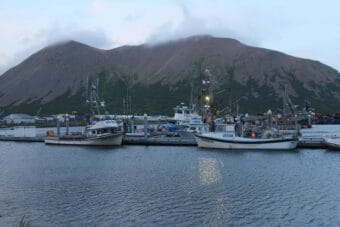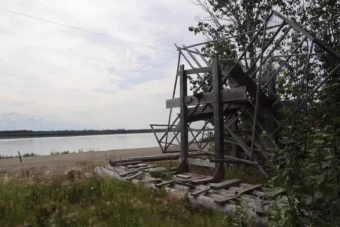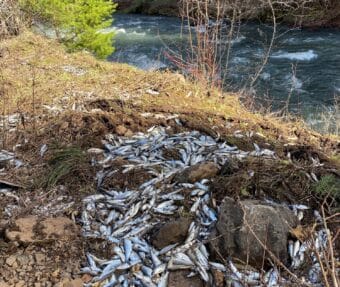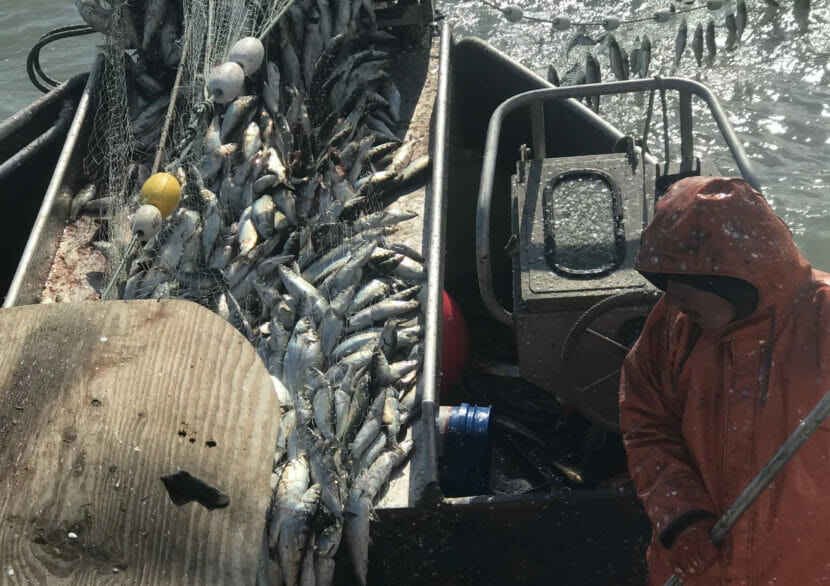
The Togiak sac roe herring fishery used to draw hundreds of fishermen.
“It was like a gold rush,” said Frank Woods, who lives in Dillingham and started fishing for Togiak herring in the mid-1980s. “The whole bay would fill up with industry. It would be a buzz, everybody would gear up to go. And everybody had not only fun doing it but made money at it.”
Fast forward to 2018, and Woods was the only gillnetter in the fishery.
“Going from that huge industry to down to one boat, I never imagined that even possible,” he said, referring to the gillnet fleet. “Let alone like now, no fishing at all, to where there’s no market for it and nobody’s targeting and changing that for us.”
Togiak is Alaska’s largest herring fishery. But as the market for roe has shrunk, the remote fishery has become financially unfeasible. This spring, no commercial fishing will take place.
Processing companies in Alaska primarily sell herring to Japan, which used to have a big market for the roe. But as Japanese tastes shifted, that market shrank, and the price for herring dropped.
For years, the Alaska Seafood Marketing Institute has worked to increase demand for herring in the U.S. The state bought a herring fillet machine for processors to use. It’s also tried to promote the culinary delights of the fish, hosting Alaska Herring Week three years in a row and working with chefs to develop recipes. But the demand for Alaska herring hasn’t budged significantly, and this year, processors opted out of Togiak.
“You can only lose money for the fun of it for so long,” said Bruce Schactler, a longtime herring fisherman who now directs the institute’s food aid program. “We’ve continued, over time, to lose more and more buyers out of Togiak, and herring buyers in general across the state,” he said. “So what that really tells you is there isn’t very much money in it.”
That’s why last year, Schactler and others at the institute published a report, the Alaska Herring Market Recovery Project. It said the goal was to bring new perspectives to an industry “stuck in the 1980s.”
Examining European fisheries in the North Atlantic, Schactler found that fleets fish for herring throughout the year, so processors get a lot of different products based on when the fish are caught, unlike in Alaska, where most fisheries target runs during the spring spawning season. Among the key findings, it reported that some customers will pay more for specific products, like fish with a certain percentage of fat.
Herring from the North Atlantic are used to make fish meal and oil, but also for canning, pickling and smoking.
“They catch the fish in Norway, they ship it to Germany or Denmark. They smoke it, they can it, and next thing you know you’re buying it in Trader Joe’s in Seattle,” he said. “My question has always been, ‘Well, could we catch these big herring in Alaska? Can we catch ‘em in the wintertime in some of these other places when they have a different meat quality from the spawning phase, and then can we do something with them?’
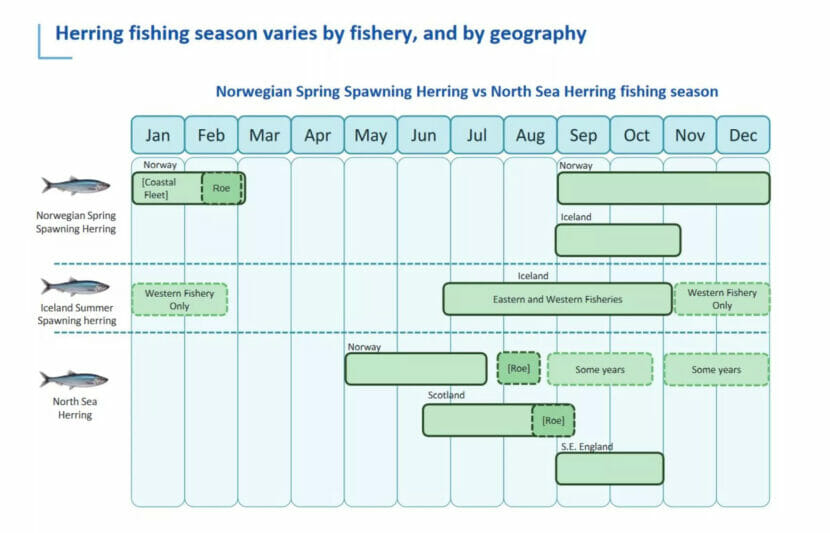
Schactler said in order to market herring successfully, the American fishing industry needs to figure out a new way to sell it. But he said so far, they haven’t seen strong interest in doing so. And there are some key differences between herring fisheries in Alaska and in the Atlantic. For one, the European fisheries are closer to a big slice of their market than Alaska processors, which have to ship fish much further away. And he said herring fisheries in the North Atlantic are bigger.
“Some of the boats they’re fishing will bring in 10 million pounds aboard,” he said. “They’ll have a big week up there fishing and they catch 35,000 tons in just a week.”
The report highlights opportunities in the industry as well; some European herring stocks lost their sustainability certification from the Marine Stewardship Council in 2020, and the report says that creates openings for other fisheries to win new customers.
And even in Europe, the drive for herring has declined, as the customer base has aged. One expert said, “the challenge, which we are facing very soon, is that the herring eating population will die out.” So companies are trying to get younger people to be more enthusiastic about herring, like a Danish marketing campaign called “Vild med Sild,” or “Crazy about herring.”
Others say the demand is there in Eastern Europe, where Poland has successfully marketed herring as a snack food. But geopolitical factors like Russia’s war in Ukraine contribute to the “volatile” nature of the herring market, and it likely means those countries will turn to cheaper herring products.
“What’s happening in Ukraine will change the market totally for herring. I don’t think they will have the money to pay for it,” said one United Kingdom source in the report. “Poland is a big market, everybody wants it. The trouble is, herring is perceived as cheap. Everybody is trying to undercut everybody else.”

Back in Alaska, President and CEO of OBI Seafoods Mark Palmer said they couldn’t process herring this year because of plant renovations in Dillingham and Naknek ahead of the salmon season. And Japan’s floundering demand for herring is just one more reason not to pursue Togiak’s fishery more forcefully. Palmer said OBI has looked at alternative customer bases for herring before, but it’s hard to compete because unlike fisheries in other parts of the world, they mainly target roe-bearing herring. And he said they haven’t hit on the right product yet.
“I think once there’s a product out there, then it would be, you know, can we compete? Can we go out and produce and compete in the global marketplace?” Palmer said. “There’s been efforts to work on fillets, at one point we had equipment in our Kodiak plant, we were filleting herring, we’ve canned, we’ve made samples of canned.”
Schactler said that in order for things to change, management has to shift; Alaska’s herring fisheries are largely managed to harvest sac roe, but to get fish with higher oil content, for example, they would have to harvest them in the fall.
“If you don’t change — [the Alaska Department of] Fish and Game doesn’t change — management, then you don’t have access to those fish for those particular products that you’re going to try to address in some section of the market,” he said. “Management has to change if anything else is going to change in any significant manner.”
For this spring, Togiak’s herring run will return to spawn, unharvested by a commercial fleet.

